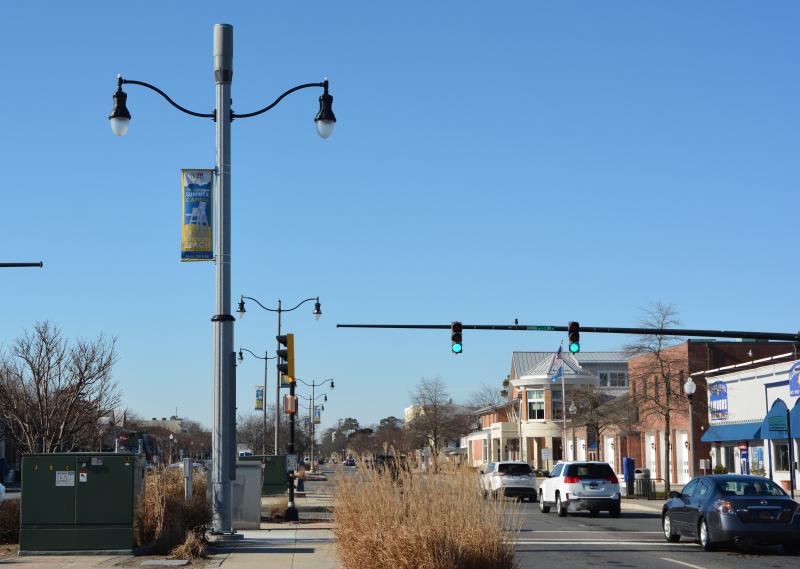AT&T representative Joseph Divis said data traffic on his company’s network has increased 470,000 percent since 2007.
“We are so dependent on devices,” said AT&T’s assistant vice president of external affairs during a discussion with the Lewes Board of Public Works Feb. 27. “And certainly the younger generation is using [mobile devices] for their whole lives.”
That unprecedented growth has created challenges for AT&T and its competitors, as they struggle to keep up with demand.
“If there’s congestion on the network, it slows speeds down and creates a bad customer experience,” Divis said. “It’s just like being on Route 1. If you get only a few cars, you’re moving along. If you get a boatload of cars on the weekend, what happens? It slows down. That’s not much different than how we handle a wireless network.”
To keep up with demand, AT&T and other companies are looking to upgrade their existing towers, and install small cell antennas on electric poles and light posts.
BPW General Manager Darrin Gordon said he’s already been contacted by Verizon, seeking to put up seven small cell antennas near the beach.
AT&T recently installed five small cell antennas in Rehoboth Beach. Since signing the licensing agreement with AT&T, Rehoboth commissioners moved forward with hiring a Pittsburgh-based law firm to create an ordinance for the city addressing the installation of wireless technology.
Lewes BPW and city council may soon begin work on similar regulations. In Lewes, city council would be responsible for zoning and aesthetics issues related to the antennas, while BPW would deal with the infrastructure and functionality.
In most cases, small cell antennas can be seamlessly added to poles or posts. Called a cantenna, the cylindrical box is painted and attached to the top of a pole.
Small cell antennas are designed to improve the network in a small area, covering 500 to 1,200 feet. They work in concert with a company’s cell towers.
Divis said there are no immediate plans to request small cell antennas in Lewes, but his company will continue to monitor the network to see if they’re needed.
Nick Roth is the news editor. He has been with the Cape Gazette since 2012, previously covering town beats in Milton and Lewes. In addition to serving on the editorial board and handling page layout, Nick is responsible for the weekly Delaware History in Photographs feature and enjoys writing stories about the Cape Region’s history. Prior to the Cape Gazette, Nick worked for the Delmarva Media Group, including the Delaware Wave, Delaware Coast Press and Salisbury Daily Times. He also contributed to The News Journal. Originally from Boyertown, Pa., Nick attended Shippensburg University in central Pennsylvania, graduating in 2007 with a bachelor’s degree in journalism. He’s won several MDDC awards during his career for both writing and photography. In his free time, he enjoys golfing, going to the beach with his family and cheering for Philadelphia sports teams.


















































